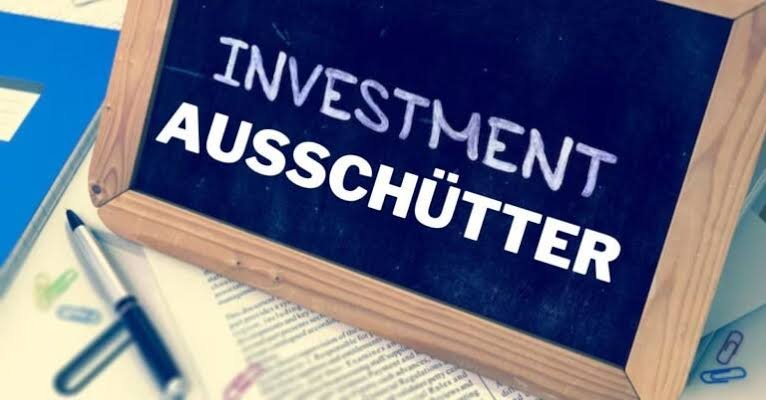
When exploring investment opportunities, one term that frequently surfaces is “Ausschütter.” Known for providing steady returns, these managed funds have garnered attention from savvy investors worldwide, particularly in the United States. This blog post delves into the many benefits of Ausschütter, guiding you through their operation and types and explaining how they can fit into your investment strategy.
The Operation of Ausschütter
Ausschütter funds, also known as distributing funds, are designed to pay out income generated from the fund’s investments regularly. Whether through dividends, interest, or capital gains, these distributions provide a consistent income stream to investors. This feature makes them particularly attractive to those seeking predictable cash flow.
Ausschütter Types
Ausschütter funds come in various forms, each catering to different investment needs and risk appetites. Common types include:
- Equity Funds: Focus on stocks that pay dividends.
- Bond Funds: Invest in interest-bearing bonds.
- Mixed Funds: Combine equities, bonds, and other assets.
- Real Estate Funds: Invest in property and related assets.
Selecting the right type depends on your financial goals, risk tolerance, and investment horizon.
Benefits of Ausschütter
Steady Income Stream
One of the primary advantages of Ausschütter is the regular income it provides. This steady stream can be particularly beneficial for retirees or those seeking supplemental income.
Diversification
Ausschütter funds typically invest in a diversified portfolio of assets, reducing the risk associated with individual investments. This diversification can enhance the stability of returns over time.
Professional Management
Managed by experienced fund managers, Ausschütter funds benefit from professional expertise in asset selection and portfolio management. This active management aims to maximize returns and reduce risks.
Flexibility
Investors can reinvest the distributions or use them as income. This adaptability allows for personalized investment strategies tailored to individual financial needs.
Drawbacks with Ausschütter
While Ausschütter offers numerous benefits, they are not without drawbacks. Potential disadvantages include:
- Tax Implications: Distributions are often subject to taxation, which can reduce net returns.
- Management Fees: Professional management comes at a cost, which can eat into profits.
- Market Risk: Like all investments, Ausschütter is subject to market fluctuations, and returns are not guaranteed.
Understanding these drawbacks is crucial for making informed investment decisions.
Selecting the Appropriate Ausschütter
Choosing the right Ausschütter involves assessing your financial goals, risk tolerance, and investment horizon. Key considerations include:
- Fund Performance: Analyze historical performance and compare it with benchmarks.
- Management Team: Evaluate the experience and track record of the fund managers.
- Investment Strategy: Ensure the fund’s strategy aligns with your financial objectives.
Thesaurierer vs. Ausschütter
It’s essential to distinguish between Ausschütter and Thesaurierer (accumulating funds). While Ausschütter distributes income regularly, Thesaurierer reinvests any profits back into the fund, potentially leading to compound growth. Each has its advantages and is suitable for different investment strategies.
Assessing Ausschütter’s Performance
Performance assessment involves analyzing returns over various time frames, understanding risk-adjusted returns, and comparing the fund’s performance to relevant benchmarks. Tools like Morningstar and fund fact sheets can provide comprehensive insights into Ausschütter’s performance.
Ausschütter’s Tax Implications
Taxation is a critical aspect of Ausschütter investments. Distributions are often taxable as income, which can vary based on jurisdiction. Understanding the tax implications and seeking professional advice can help optimize your investment strategy and ensure compliance with tax regulations.
Creating a Balanced Portfolio
Incorporating Ausschütter into a balanced portfolio involves diversifying across different asset classes and geographical regions. A well-balanced portfolio can mitigate risks and enhance potential returns. Tools like asset allocation models and financial advisors can help create a diversified and balanced investment portfolio.
Ausschütter’s Function in Retirement Planning
Ausschütter can play a vital role in retirement planning by providing a steady income stream. They can supplement other retirement income sources, such as social security or pensions, ensuring financial stability during retirement. Careful selection and monitoring can make Ausschütter an integral part of a robust retirement plan.
Actual Cases
Real-life examples of successful Ausschütter investments can provide valuable insights. Case studies can highlight the practical application of these funds and demonstrate how they can contribute to achieving financial goals.
Professional Trends and Insights
Staying abreast of the latest trends and insights in the finance industry can enhance your investment decisions. Following thought leaders, attending webinars, and reading industry publications can provide valuable perspectives on Ausschütter and other investment opportunities.
FAQs about Ausschütter
What distinguishes a Thesaurierer from one?
While Ausschütter distributes income regularly, Thesaurierer reinvests profits into the fund, potentially leading to compound growth over time.
How often do rewards occur?
Distributions can vary depending on the fund’s policy, but they typically occur quarterly, semi-annually, or annually.
Are there assurances regarding distributions?
While Ausschütter aims to provide regular income, distributions are subject to the fund’s performance and market conditions. There are no guarantees.
How is there taxation?
Distributions are generally taxed as income, but tax rates and regulations vary by jurisdiction. It is advisable to consult with a tax professional.
In which sectors do funds generally make investments?
Ausschütter funds can invest in various sectors, including equities, bonds, real estate, and more. The specific sectors depend on the fund’s strategy and objectives.
Conclusion
Ausschütter offers a range of advantages for investors seeking steady returns and diversification. By understanding their operation, assessing performance, and considering tax implications, you can make informed decisions that align with your financial goals. Whether you’re planning for retirement or looking to diversify your portfolio, Ausschütter can be a valuable addition to your investment strategy.
Harness the potential of Ausschütter to find steady returns and achieve your financial objectives. Please share your experiences and insights in the comments below, and let’s continue the conversation on smart investing.